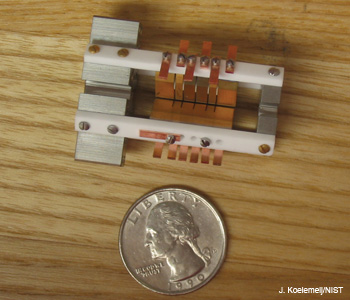Scatterings
Optical Clock Leads to Better Measurements of Relativity
Thanks to super-accurate optical clocks, scientists can measure the effects of relativity on ordinary speeds in the everyday world—10 m/s, which is 33 kph or roughly 22 mph.
 The ion trap in the NIST aluminum-ion clock. The aluminum ion and partner magnesium ion sit in the slit running down the center of the device between the electrodes.
The ion trap in the NIST aluminum-ion clock. The aluminum ion and partner magnesium ion sit in the slit running down the center of the device between the electrodes.
Drivers caught in slow-moving traffic may not realize that they are experiencing relativistic time dilation. But thanks to super-accurate optical clocks, scientists can measure the effects of relativity on ordinary speeds in the everyday world—10 m/s, which is 33 kph or roughly 22 mph.
…Log in or become a member to view the full text of this article.
This article may be available for purchase via the search at Optica Publishing Group.
Optica Members get the full text of Optics & Photonics News, plus a variety of other member benefits.
